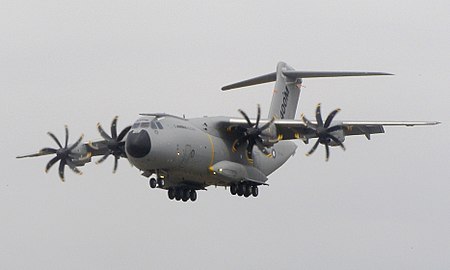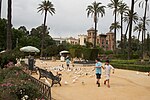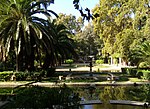2015 Seville Airbus A400M crash
2015 in AndalusiaAccidents and incidents involving military aircraftAviation accidents and incidents in 2015Aviation accidents and incidents in SpainHistory of the province of Seville ... and 4 more
May 2015 events in SpainProvince of SevilleSoftware bugsVague or ambiguous time from October 2017

On 9 May 2015, an Airbus A400M Atlas cargo plane on a test flight crashed at La Rinconada, Spain, less than 5 kilometres (3.1 mi) from Seville Airport at around 1:00 pm local time, killing 4 of the 6 crew.
Excerpt from the Wikipedia article 2015 Seville Airbus A400M crash (License: CC BY-SA 3.0, Authors, Images).2015 Seville Airbus A400M crash
Avenida Maestranza Aérea, Seville Los Remedios
Geographical coordinates (GPS) Address Nearby Places Show on map
Geographical coordinates (GPS)
| Latitude | Longitude |
|---|---|
| N 37.3667 ° | E -5.9944 ° |
Address
Avenida Maestranza Aérea
Avenida Maestranza Aérea
41011 Seville, Los Remedios
Andalusia, Spain
Open on Google Maps











